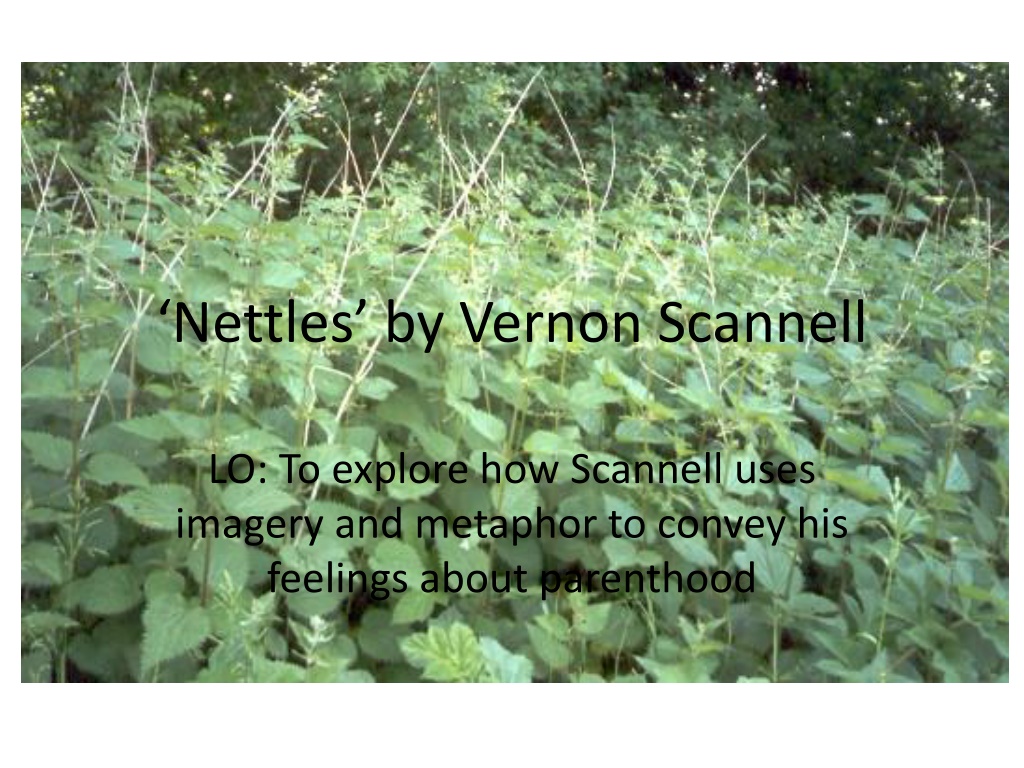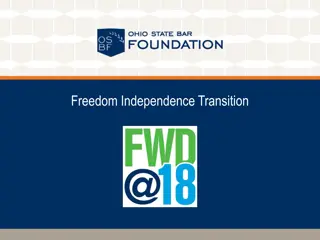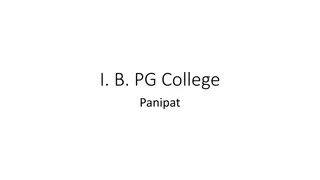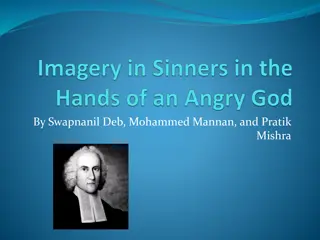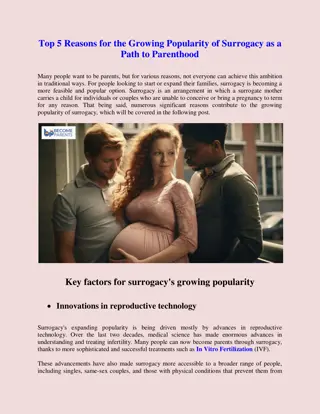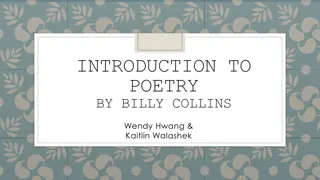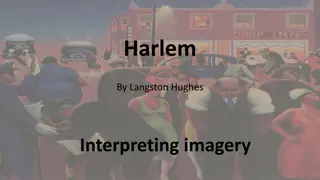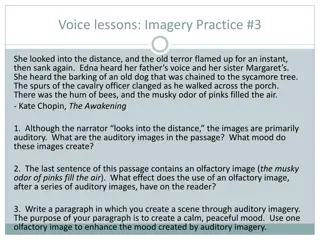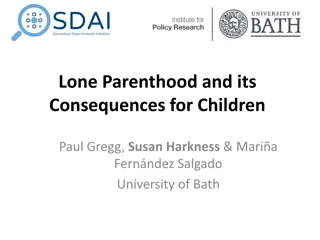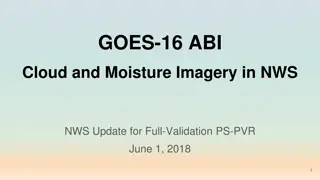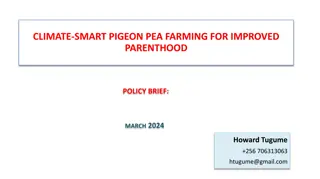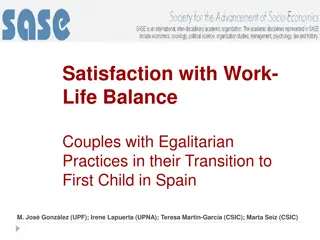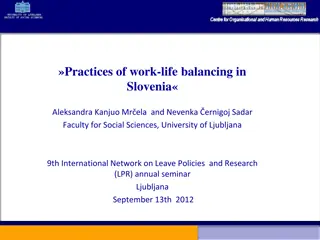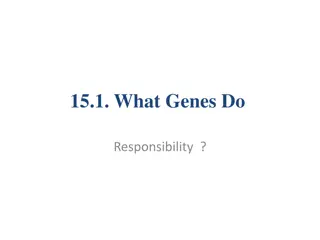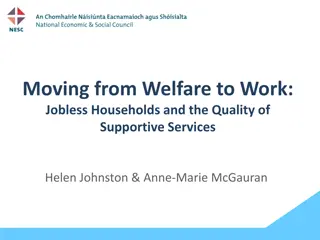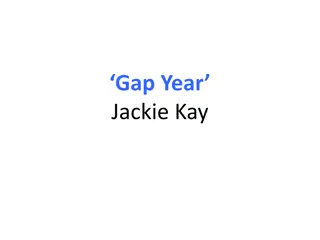Parenthood Through Imagery in "Nettles" by Vernon Scannell
Vernon Scannell's poem "Nettles" delves into the protective instincts of a father shielding his son from the harsh realities of the world. Through vivid imagery and metaphor, Scannell depicts the struggles of parenthood, portraying nature as a menacing force akin to the military, all while reflecting on his own life experiences and emotional turmoil. The poem explores themes of love, fear, vulnerability, and the relentless desire to shield loved ones from harm in a world filled with challenges and dangers.
Download Presentation

Please find below an Image/Link to download the presentation.
The content on the website is provided AS IS for your information and personal use only. It may not be sold, licensed, or shared on other websites without obtaining consent from the author. Download presentation by click this link. If you encounter any issues during the download, it is possible that the publisher has removed the file from their server.
E N D
Presentation Transcript
Nettles by Vernon Scannell LO: To explore how Scannell uses imagery and metaphor to convey his feelings about parenthood
Vernon Scannell This poem is about a father protecting his son. It s about the dangers of a dark, menacing world in which nobody and nothing can be saved. Nature will attack you, be cut down, grow back and fight you again just like the military will hunt you down and find you if you leave without consent. Scannell is protecting his son from a world he hates and fears.
Vernon Scannell Sees war in everything Was a dark character, 85 when he died. Lived through 2ndWorld War and the Cold War. Joined the army aged 18. He was addicted to desertion, leaving the army without consent twice. He was sent to a psychiatric hospital the 2ndtime. He had 2 children (1 was handicapped and died as a young child, the other died in a bike crash as an adult.)
Oxymoron emphasises contrast between image of stinging nettles with security of bed. Possession Emotive Full stop forced reader to slow down My son aged three fell in the nettle bed. A Bed seemed a curious name for those green spears, B That regiment of spite behind the shed: It was no place for rest. With sobs and tears Metaphor bayonets linked to military/ violence personifies like a battalion of soldiers Inverted commas suggest contemplation.
2nd quatrain language more tender and protective Sibilance linked to emphasise the soothing of his injured son Alliteration emphasises small blisters Shows he s vulnerable The boy came seeking comfort and I saw A White blisters beaded on his tender skin. B We soothed him till his pain was not so raw. A At last he offered us a watery grin, B Dark, violent image Protective images Oxymoronic image merging laughter of comfort with relief of pain. Reflects changing moods of children Father anxious for his son to no longer feel pain
3rd quatrain language changes to being very regimented And then I took my billhook, honed the blade A And went outside and slashed in fury with it B Till not a nettle in that fierce parade A Stood upright any more. And then I lit B Military references Personification helps to portray military images used when destroying nettles Anger towards nettles / feeling that he is chopping away at bad memories of the past.
4th quatrain offers clue to his resentment towards military Metaphor burning the wounded/ dead. Ultimate end reinforced by sounds of consonance Lost at war A funeral pyre to burn the fallen dead, A But in two weeks the busy sun and rain B Had called up tall recruits behind the shed: A My son would often feel sharp wounds again. B Natural forces Surreptitious/ furtive Last line = negative image. Maybe about loss of his son or about pointlessness of trying to protect your children. New recruits to replace those who have died Links back to the beginning/ emotive/ possessive Clue to deep rooted hatred towards the military
My son aged three fell in the nettle bed. Bed seemed a curious name for those green spears, That regiment of spite behind the shed: It was no place for rest. With sobs and tears Metaphors linked to military references The boy came seeking comfort and I saw White blisters beaded on his tender skin. We soothed him till his pain was not so raw. At last he offered us a watery grin, And then I took by billhook, honed the blade And went outside and slashed in fury with it Till not a nettle in that fierce parade Stood upright any more. And then I lit A funeral pyre to burn the fallen dead But in two weeks the busy sun and rain Had called up tall recruits behind the shed: My son would often feel sharp wounds again.
Theme: war/ violence/ danger (in nature and the everyday world) Language Metaphors are linked to the military/ war/ painful images. Anger there s danger in all things. Negative poem. Physical hurts trigger memories of mental scars Protective natural rhyme in poem reflects a nursery rhyme sung to comfort a child. Structure Simple ABAB rhyme scheme Iambic pentameter 4 quatrains Simple melodic rhyme scheme reinforcing sense of nursery rhyme for child.
Compare to: another poem that shows anger and strength of those feelings
How does Scannell use imagery and metaphor to convey his feelings about parenthood? In your answer explain why Scannell has chosen to use military images to explore ideas about parenthood in this poem.
